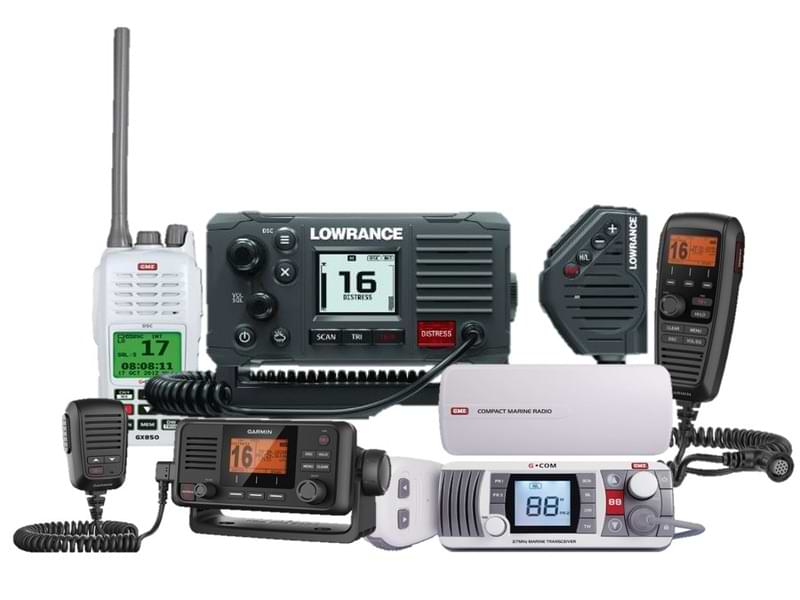Be Prepared By Knowing How to Do a Marine Radio Check
Date Posted: 29 June 2023

There’s nothing better than a day on the water. The feeling of cool ocean air, warm summer sun and splashes of sea spray always succeeds in refreshing and rejuvenating. You’ll have an even better time, however, if you know you’re protected from potential danger. A handheld marine radio goes a long way in keeping you safe.
This instrument ensures that you can communicate effectively with other ships and emergency services while out on the water. Whether you're making routine calls, performing radio checks or handling distress situations, understanding how to test, use and troubleshoot your marine radio is crucial. Familiarising yourself with your marine radio will allow you to maximise its functionality and ensure smooth communication while you’re out on the water.
How to Test, Check & Talk On Your Marine Radio?
Performing a radio check is necessary to ensure your unit is functioning properly. This process is made up of the following steps:
- Rather than using channel 16, utilise an “open channel” to perform the check.
- Listen before calling to make sure you are not interfering with existing communications.
- Turn the radio to one-watt power setting, and key the microphone.
- Call “Radio check” three times, followed by your boat name and location.
- Wait for a reply confirming someone has heard your transmission.
- When calling and working with another maritime station, establish communications on a calling frequency. For VHF, this is channel 16.
- Once communications have been established, switch to a working channel or frequency.
Tips for Using Your Marine Radio
The following tips will assist you in correctly using your marine radio:
- Always use your call sign and/or the name of your boat for identification.
- For normal (non-distress/urgency) messages, ask to switch to a working channel once you have contacted the other station.
- Keep your message brief and clear.
- Stop transmitting when requested to do so by a local marine radio station.
- Always return your radio to the distress frequency when you have completed a call on another frequency.
- Do not transmit unnecessarily or allow children to play with the radio. There are severe penalties for using a radio to falsely indicate distress.
Tips for Troubleshooting Your Handheld Marine Radio
When troubleshooting a marine radio, there are some tips that can help you identify and resolve common issues:
- Ensure that the radio is properly connected to a reliable power source, and check the battery level or connection to the boat's electrical system.
- Verify that the antenna is securely connected to the radio. Check for any damage or corrosion on the antenna and its connectors.
- Make sure the volume is turned up to an audible level and the squelch is set appropriately to eliminate background noise.
- Verify that you are tuned to the correct channel and frequency for your intended communication or listening purpose.
- Move your boat to different areas to test if the radio performs better in certain locations. This can help identify potential interference sources or signal range limitations.
- Remove any obstructions that may be blocking the radio's antenna, such as overhead structures or equipment.
- Review the user manual for troubleshooting guidelines specific to your marine radio model. It may provide troubleshooting steps or error code explanations.
3 Things You Must Know About Marine Radios
1. How to Call?
It is crucial to listen before initiating a call to avoid interfering with ongoing communications. When contacting and coordinating with another maritime station, begin by establishing communication on a designated calling frequency. In the case of VHF radios, this would be channel 16.
After successful contact has been established, proceed to switch to a designated working channel or frequency. For VHF radios, channels 72, 73, or 77 are commonly used when communicating with other vessels, while channel 73 is typically employed when communicating with a coast station. For HF marine radio, the specific calling and working frequencies can be found in the maritime ship station LCD.
2. How to Make a Distress Call?
A distress call has priority over all other transmissions. For VHF radios, use either channel 16 or 67 for distress calls. In the MF/HF marine bands, several frequencies are available, including 2182 kHz, 4125 kHz, 6215 kHz, 8291 kHz, 12 290 kHz, and 16 420 kHz. When using the MF/HF bands, it is advisable to start with the lowest licensed frequency and gradually move to higher ones until you establish a successful connection. It’s important to listen attentively before transmitting to ensure that the chosen channel is not already in use by other parties.
3. Marine Radio Qualifications
To operate marine radios (excluding 27MHz), operators must possess the necessary qualification that aligns with the type of maritime station they are using. This requirement ensures a comprehensive understanding of safe radio equipment usage, encompassing proper adherence to marine radio protocols and procedures.
Operators can obtain one of the 7 types of qualifications or endorsements issued specifically for marine radio operators. These qualifications equip operators with the knowledge and skills required for efficient and secure radio communication.
Acquiring a Reliable Handheld Marine Radio
No matter how effectively you are able to use, test and check your marine radio, none of it is relevant if it isn’t a high-quality piece of equipment. To ensure that your marine radio is going to last a while and withstand substantial wear-and-tear, you need to choose a product that is tried-and-tested.
Products such as Lowrance marine radios are highly durable and easy to use, with intuitive controls and a 4-button fist microphone. You can get these products and more at Mr Boats, Australia’s best supplier of marine supplies and accessories. Browse our website today for first-class marine radios!





